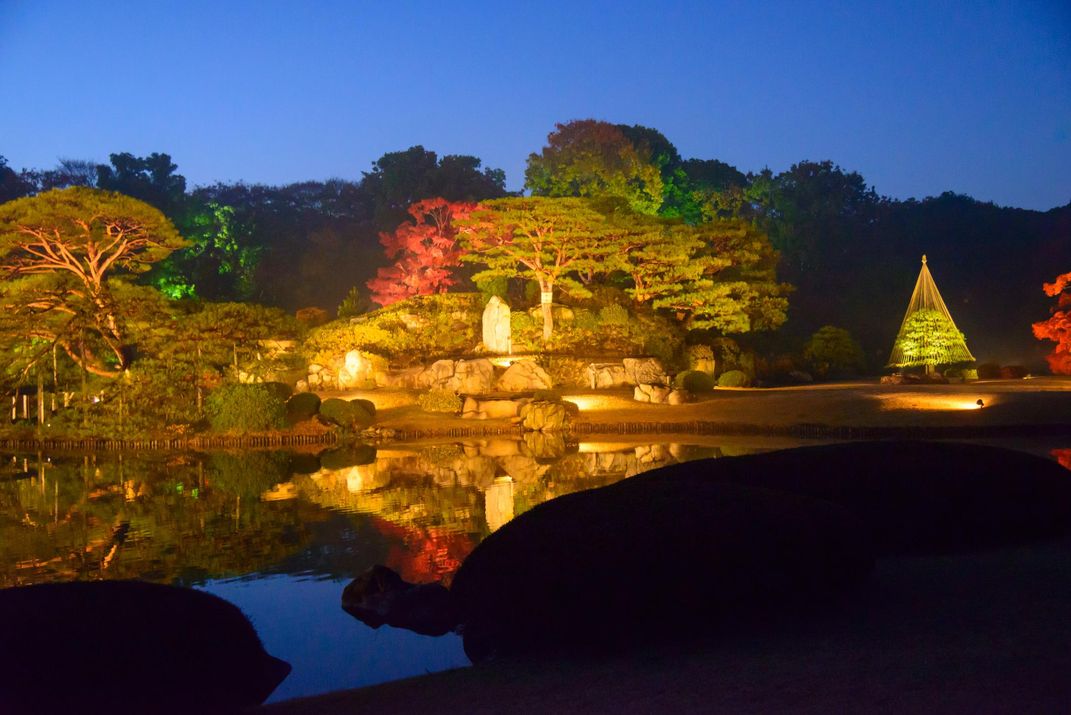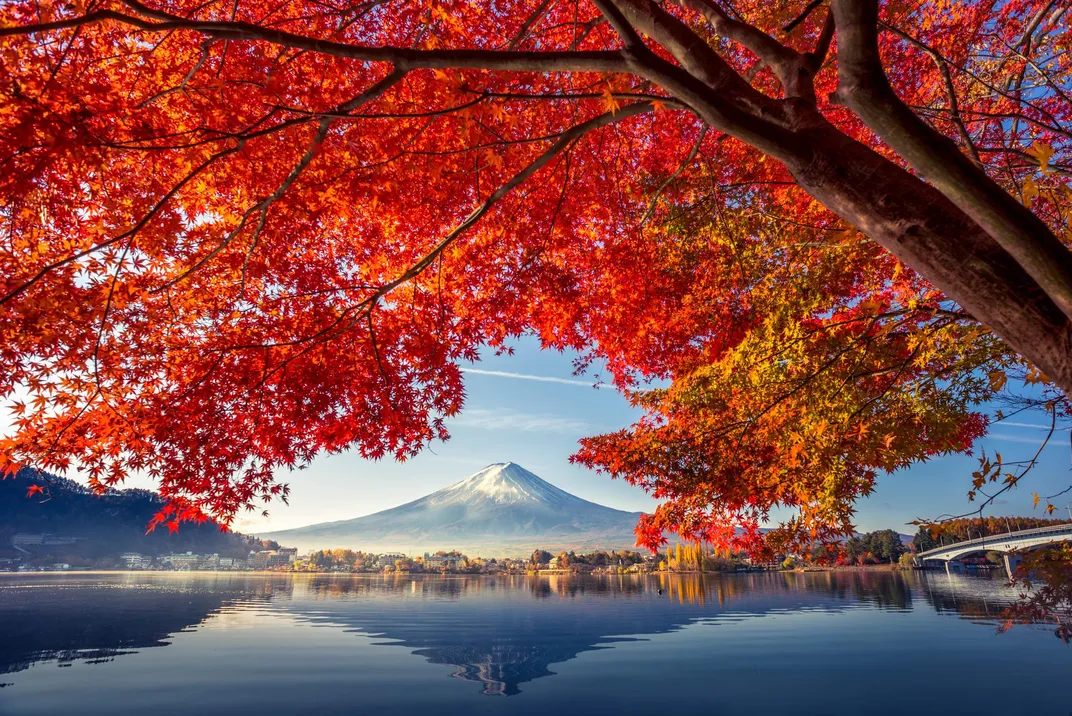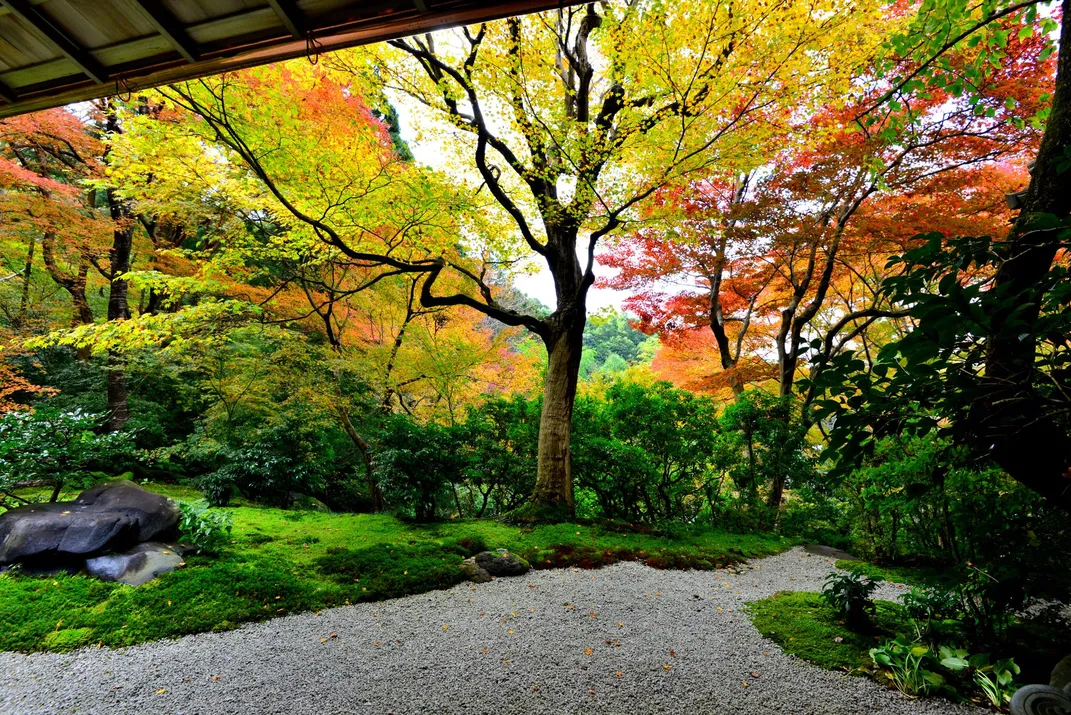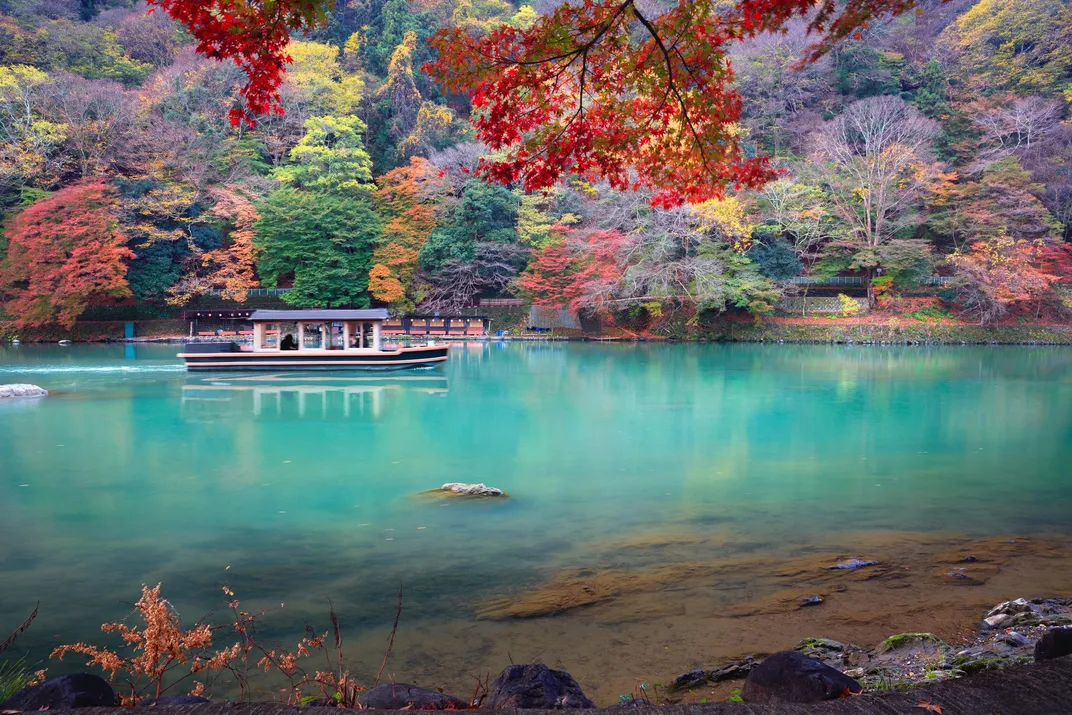Forget Cherry Blossoms — Why Fall May Be the Best Time to Visit Japan
From mid-October to early December, Japan’s gorgeous gardens burst with color
/https://tf-cmsv2-smithsonianmag-media.s3.amazonaws.com/filer/31/7f/317f7f56-c30e-4a99-ba23-5f671018ddfb/japan-autumn-kyoto.jpg)
Thanks to the tiny star-shaped leaves that radiate from the momiji, the maple indigenous to eastern Asia, autumn in Japan is exhilarating. Walking through Kiyosumi Gardens in Tokyo on a recent visit, I glanced up at a constellation of red, orange, yellow and green leaves that interlocked to form a scrim. As the sun shone through, my world was bathed in kaleidoscopic color.
That evening, I went to Rikugi-en — like Kiyosumi, a classical Edo-period strolling garden. Stage lights illuminated the momiji, so that their bright bodies flexed against the night like lanterns. Fog machines generated mist, obscuring the ground. Both Rikugi-en and Kiyosumi are part of the Autumn Leaves Stamp Rally, an annual event during which ecstatic pilgrims visit all nine of Tokyo’s main gardens, receiving a stamp in a booklet for each one.

The Japanese, ever attuned to the seasons, love the cherry blossom. But kōyō, or fall color, is cherished with nearly the same ardor. Beginning in the 17th century, Japanese gardeners, in typically exacting manner, arranged more than 300 varieties of maple around temples, inns and residences in pleasure-giving color configurations. Momiji leaves are thin but taut, like sheets of crystallized honey, and can refract and filter light, like natural stained glass. Japan is full of unusually red trees, and in the sunlight the leaves glow like rubies.

In recent years, media attention and foreign enthusiasm, particularly from the Chinese, have raised the passion for Japanese leaf-chasing to a kind of fervor. From mid-October until early December, websites track the changing of the leaves from northeast to southwest. There are colorful trees all over the country, but most visitors cluster around the major cities, where hotels print daily foliage updates for guests. Such obsessiveness adds to the frenzied quality of the pursuit. But a chance to see the leaves at full wattage is a lesson in savoring the moment before the startlingly vivid colors fade.
Because Kyoto was not bombed during World War II, its trees and temples are generally older than Tokyo’s and are particularly prized. The Zen temple Enrian is open only five weeks a year for connoisseurs to see its famed 350-year-old tree, bred so its leaves turn blood-red. Visiting Rurikōin, I saw a crowd of fiery maples, whose predominant color, orange, was projected through a window onto a black lacquered floor.

Founded in 778, Kiyomizu Temple is perched atop a 43-foot cliff. It looks like the biblical ark suspended on an amber ocean of maple leaves. Young women dressed in cream, teal, and camel lingered over the view of the hills and vermilion pagodas sprouting from the scarlet forests. I gazed out at the horizon, to a landscape pulsing with color, and my heart throbbed with happiness.

Other articles from Travel + Leisure: